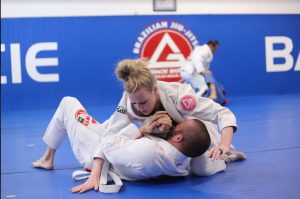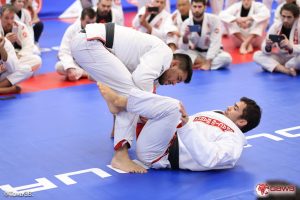Student question “Hey coach! Can you show me this move?”
In conversation with an experienced Jiu-Jitsu instructor I asked what difficult questions he was asked most often by the students?
ㅤ
“Most often it will be an inexperienced student asking to be shown an advanced, complicated move” he explained “Hey Professor, how do I do the double reverse berimbolo into crab ride and Ninja choke? I saw it on YouTube and it is awesome!”
ㅤ
 This seemingly is a harmless question about technique. But it is more complicated to answer than the coach simply explaining a move.
This seemingly is a harmless question about technique. But it is more complicated to answer than the coach simply explaining a move.ㅤ
Most people who have been around the GB school for any length of time will recognize that in new student’s enthusiasm for Jiu-Jitsu, they see very advanced, sports positions on YouTube and can’t wait to get on the mats and give it a try. For some especially enthusiastic students, the fancier the move, the more inversion and lapel grips…the better! However, that new student may still be very early in their understanding of the basic techniques and an advanced move isn’t the next piece of the puzzle that they most need in their game.
ㅤ
Now a Jiu-Jitsu student can not be faulted for getting excited by a flashy technique on the internet. All Jiu-Jitsu addicts at one time have seen an awesome move that they immediately wanted to try for themselves. When you see a new move, you just can’t wait to roll with your favorite training partners and surprise them with this latest addition to your game.
you see a new move, you just can’t wait to roll with your favorite training partners and surprise them with this latest addition to your game.
 you see a new move, you just can’t wait to roll with your favorite training partners and surprise them with this latest addition to your game.
you see a new move, you just can’t wait to roll with your favorite training partners and surprise them with this latest addition to your game.ㅤ
The instructor can’t be too rigid or dogmatic in their attitude towards a white belt student being curious about an advanced move. The instructor doesn’t want to stifle the students’ enthusiasm and creativity. Exploring the possibilities and variations of positions is what makes our love for Jiu-Jitsu grow and endure over the years.
ㅤ
However, as many more experienced Gracie Barra readers know, seldom do these new flashy moves turn out to be the transformational game changer that it seemed at first. Most often, the awesome move is a specific tool for a specific situation. In the majority of your rolls, you won’t likely often find yourself in a situation where that particular move works.
ㅤ
 The Professor explained that he would explain to the student that he was familiar with the move and could offer a few tips. Perhaps even adding that the instructor himself didn’t specialize in that position.
The Professor explained that he would explain to the student that he was familiar with the move and could offer a few tips. Perhaps even adding that the instructor himself didn’t specialize in that position.ㅤ
The instructor would add that perhaps this move or position was not a good choice for the less experienced student.
ㅤ
Why not?
ㅤ
Because learning advanced positions is only possible if a student has a solid foundation in the basics. If you don’t have the base, balance, timing, hip movement gained by experience drilling the basics, you are unlikely to have enough of those qualities to execute (or even get to the position to start!) a much more advanced, complicated move. You just aren’t ready for that technique…yet.
ㅤ
In most sports and arts, mastering some basic skills up front is a prerequisite for building up to the more advanced movements. Can you imagine going scuba diving at depth without first learning how to clear your mask or control your bouancy? Of course not. And so it is with Jiu-Jitsu.

ㅤ
In fact, the key to having the best Jiu-Jitsu is to be REALLY good at those smaller subset of moves that you use EVERY time you roll. Replacing guard from side control, how to open the closed guard…etc. Your instructor WILL show you the inverted guard and lapel techniques, but they may want to see your elbow to knee escape first.
ㅤ
It is tempting to think that there is a secret move that will make the difference in your game. But it just doesn’t work that way. Your ultimate skill will come from just how well you can apply that core of basic techniques. By chasing that next fancy move, you might be getting off track of learning what is really important to your progress.
ㅤ
That is why your instructor might seem reluctant to answer your question about that fancy new move.ㅤ
